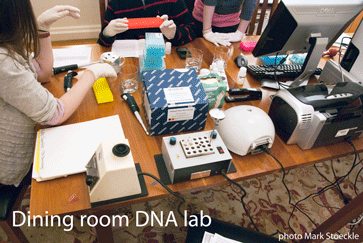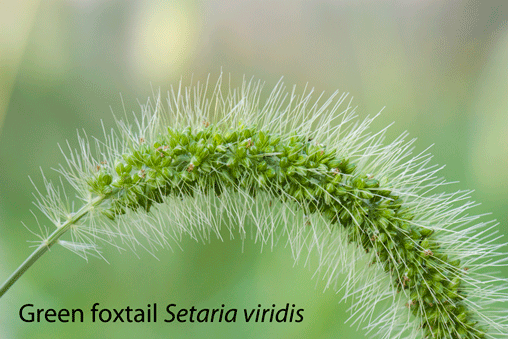The Alfred P. Sloan and Richard Lounsbery foundations have supported the creation of an interactive game to reduce the USA federal government budget deficit. The game has been played more than 150,000 times. It’s fun, more fun than actually reducing the deficit. Try the fantasy version at Budget Hero.
News
Name the Scientist
The New York Times created an interactive game “name the scientist†in which Jesse Ausubel is the wrong answer to the 4th question. Richard Dawkins is the right answer. Still we are flattered to be in such company. Enjoy the game.
Time away
# of Species
On 23 August, PLoS Biology published an important paper from the Census of Marine Life, “How Many Species Are There on Earth and in the Ocean?†by Camilo Mora, Derek P. Tittensor, Sina Adl, Alastair G. B. Simpson, and Boris Worm. As of 12 September, the paper has been viewed more than 27,000 times, an astonishing number for a scientific paper on biodiversity. The paper attracted more than 1000 news stories around the world in more than 20 languages and 50 countries. Congratulations to Camilo and Company for having made a landmark contribution. For an example of the news coverage, see 8.7 million species exist on Earth, study estimates by Juliet Eilperin in the Washington Post.
Encyclopedia of Life September 2011
On 5 September Version 2 of the Encyclopedia of Life [www.eol.org] became available. A press release describes some of the new features, which include easy ways to build communities and collections. The EOL is also now quite fully available in Spanish and Arabic. About 700,000 species now have webpages with content, remarkable progress since the first release in February 2008. Congratulations to the far-flung EOL team!
A sample of news coverage comes from the Guardian in the UK
International Quiet Ocean Experiment
An idea we have helped cultivate, the International Quiet Ocean Experiment, was the subject of a conference at the Intergovernmental Oceanographic Commission in Paris 30 August – 1 September 2011. On 3 September the French newspaper Le Monde ran a good article about the conference.
CoML Scientific Steering Committee receives the 2011 International Cosmos Prize
On 27 July 2011, the International Cosmos Prize committee announced the Census of Marine Life Scientific Steering Committee as the recipient of the 2011 International Cosmos Prize. Established in 1993 to commemorate Expo 90 in Osaka, Japan, the International Cosmos Prize aims to advance the basic concept of Expo 90, “The Harmonious Coexistence between Nature and Mankind.” The prize, which may be awarded to an individual or team, consists of a commendation, a medallion, and a monetary reward, currently 40 million yen ($500,000 US). It is awarded during a ceremony held in autumn, at which the individual or team delivers a commemorative lecture and takes part in a symposium held in their honor. Ian Poiner, Fred Grassle, Myriam Sibuet, Victor Gallardo, and Jesse Ausubel have been invited to represent the Steering Committee and the entire Census community at the ceremony 18 October 2011. The prize is a great honor for the 2,700 scientists as well as sponsors, and partners of the Census of Marine Life. For more information, see the press release at https://www.expo-cosmos.or.jp/whatsnew/2011jyusyo_e.pdf
Tea Barcode published
What’s in the world’s most popular beverage-tea? Mark Stoeckle helped
lead three NYC high school students on a DNA barcoding investigation
of commercial tea products, published today in Nature’s online
journal Scientific Reports.
Together with tea expert Selena Ahmed, Tufts University, and
senior plant biologist Damon Little, The New York Botanical Garden,
they analyzed DNA barcodes of 146 tea products (73 regular teas, which
are prepared from leaves of tea plant, Camellia sinensis, and 73
herbal teas) from 25 NYC locations, representing 33 manufacturers, 17
countries, and 82 plant common names. One-third of herbal teas had
ingredients not listed on the label–including weeds such as annual
bluegrass and herbal plants such as chamomile. More on their Tea
Barcode of Life project on PHE website.
Harvard Medicine profile of Mark Stoeckle
Harvard Medicine magazine did a good profile on PHE researcher Mark
Stoeckle and the DNA barcoding project
Tea time for DNA
What’s in your favorite tea? The dried and sometimes cooked or fermented bits of plants used to make teas are not easily identified to species by appearance. Over the past year I have been involved in a project testing whether DNA barcoding can identify the ingredients in commercial tea products, working with three New York City high school students and plant experts from Tufts University (Selena Ahmed) and The New York Botanical Garden (Damon Little). Student investigators Katie Gamble, Rohan Kirpekar, and Grace Young collected 146 tea products from 25 NYC locations, representing 33 manufacturers, 17 countries, and 82 plant common names–73 products were regular teas (prepared from Camellia sinensis, the tea plant) and 73 were herbal products prepared from other plant species.
 Our findings are published in 21 July 2011 Scientific Reports, (Nature Publishing Group’s open access journal). About 1/3 of herbal teas generated DNA identifications indicating unlisted ingredients including weeds like annual bluegrass (Poa annua) and white goosefoot (Chenopodium album) and herbal plants like chamomile (Matricaria recutita). Matching DNA ingredients to listed ingredients was sometimes challenging–we observe that “broad-scale adoption of plant DNA barcoding may require algorithms that place search results in context of standard plant names and character-based keys for distinguishing closely-related species.”
Our findings are published in 21 July 2011 Scientific Reports, (Nature Publishing Group’s open access journal). About 1/3 of herbal teas generated DNA identifications indicating unlisted ingredients including weeds like annual bluegrass (Poa annua) and white goosefoot (Chenopodium album) and herbal plants like chamomile (Matricaria recutita). Matching DNA ingredients to listed ingredients was sometimes challenging–we observe that “broad-scale adoption of plant DNA barcoding may require algorithms that place search results in context of standard plant names and character-based keys for distinguishing closely-related species.”
 We are pleased that our investigation has attracted press coverage including New York Times print and online editions and internationally in 65 news sites and 14 countries, including India and China, world centers of tea production. Most of the DNA work was done at The New York Botanical Garden in senior author Damon Little’s laboratory. For a small subset of samples (10) we did DNA isolation and amplification in my dining room with recycled lab equipment purchased on the internet for about $5000. Samples were mailed to a commercial facility (Macrogen) for DNA sequencing, with results available by email the next day. It cost about $15 a sample including sequencing (unidirectional). More info and pictures on our TeaBOL website!
We are pleased that our investigation has attracted press coverage including New York Times print and online editions and internationally in 65 news sites and 14 countries, including India and China, world centers of tea production. Most of the DNA work was done at The New York Botanical Garden in senior author Damon Little’s laboratory. For a small subset of samples (10) we did DNA isolation and amplification in my dining room with recycled lab equipment purchased on the internet for about $5000. Samples were mailed to a commercial facility (Macrogen) for DNA sequencing, with results available by email the next day. It cost about $15 a sample including sequencing (unidirectional). More info and pictures on our TeaBOL website!
What’s next? I am excited about enabling wider use of DNA barcoding by high school students, including Cold Spring Harbor’s Urban Barcode Project competition (I am an advisor), open to teams from all New York City schools, with a focus on public institutions. I expect that soon manufacturers of teas and herbal products (and regulators) will incorporate DNA barcode testing into their quality control practices. One of the important tasks for scientists is building up the reference databases. At the time of the study, BOLD (Barcode of Life Database) and GenBank lacked rbcL or matK records for about 1/3 of plant species listed on product labels in our study. More on herbal plant identification: (Lou et al 2010. An integrated web medicinal materials DNA database. BMC Genomics 11, 402; Smillie and Kahn 2010. A comprehensive approach to identifying and authenticating botanical products. Clin Pharm Therapeutics 87, 175).
